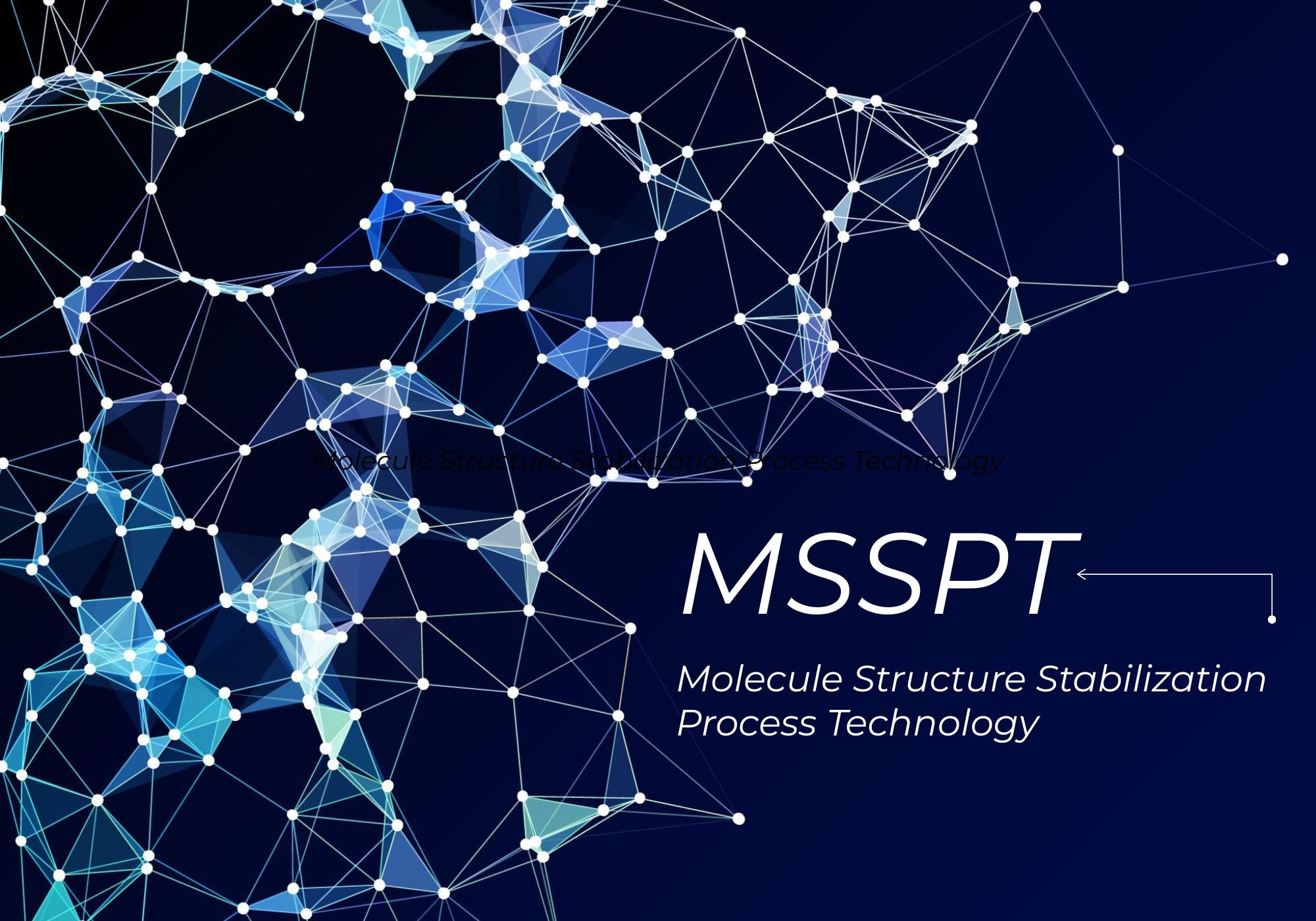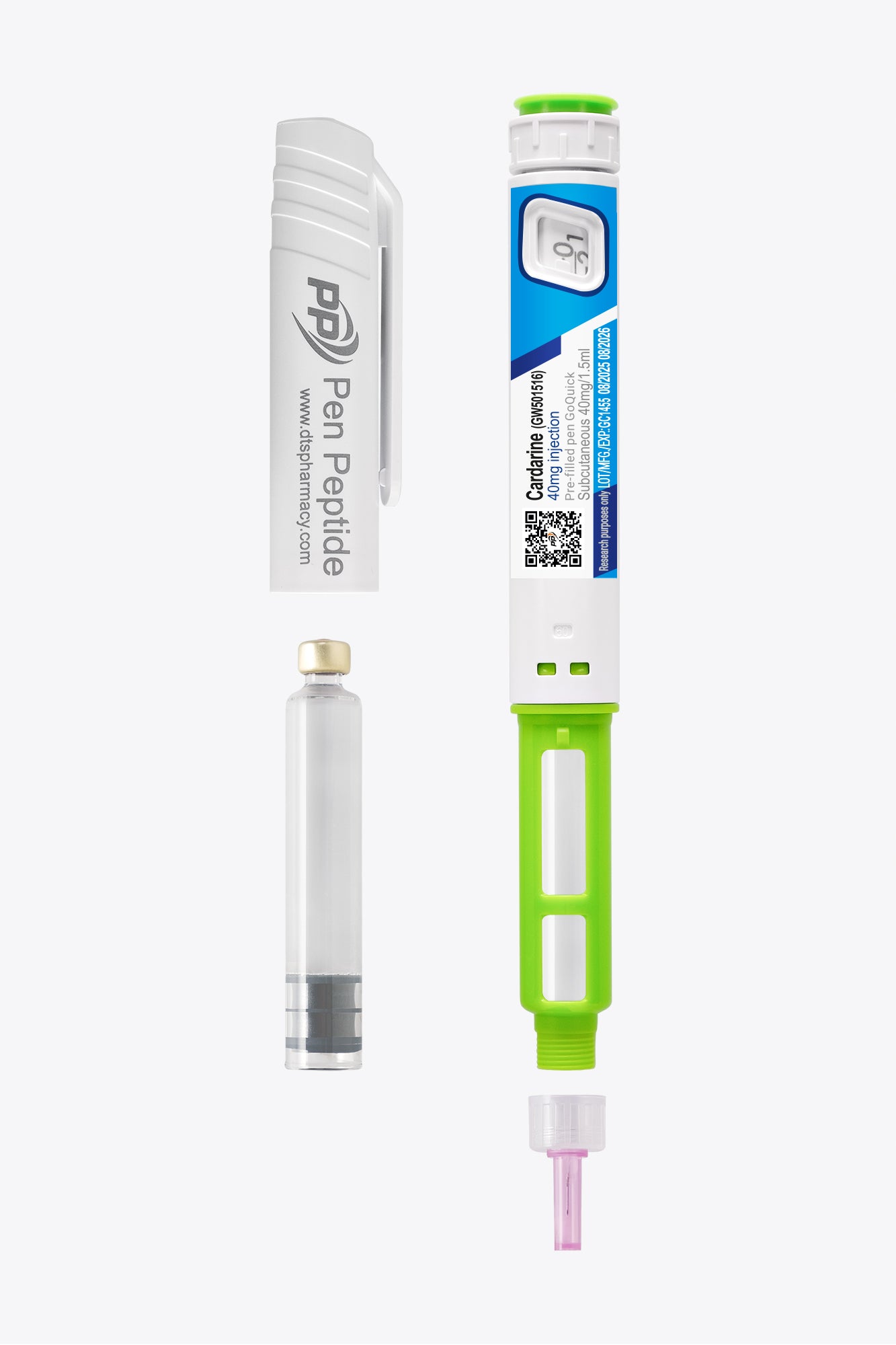Pen Peptide
Cardarine (GW501516) | 40mg/1,5 ml
Cardarine (GW501516) | 40mg/1,5 ml
Pre-Mixed Stabilized Pen
Couldn't load pickup availability
- 🥇 The first peptide brand with Pre-Mixed Pen stabilized formulations
- 📦 We ship with DHL Express in thermo-insulated packaging
- 💳 Secure payment by bank transfer
- 🧪 Purity ≥98% for precise research protocols
✅ Proper storage
✅ Proper storage
To ensure the optimal quality of our products, we pay special attention to the delivery and storage of peptides. All our shipments are sent in special cooling boxes that maintain the required temperature during transportation. This guarantees that the products will reach you in perfect condition.
After receiving the peptides, it is important to store them properly to preserve their stability and effectiveness. We recommend storing them at a temperature between 2°C and 8°C in a refrigerator. This ensures that the peptides retain their properties throughout their shelf life.
✅ Order and Delivery
✅ Order and Delivery
At Pen Peptide, we ensure fast and secure delivery of your order with DHL Express, maintaining the highest quality and reliability throughout the process.
How we process your order:
Once your payment is confirmed via bank transfer or debit/credit card, we dispatch your order on the next business day.
Orders are carefully packaged in temperature-controlled cooling boxes to ensure product integrity during transportation.
Delivery timeframe:
Standard delivery time within the Europe & UK: 1 to 3 business days (typically 1-2 business days for most locations).
Deliveries are handled exclusively by DHL Express, providing a fast and reliable shipping experience.
Tracking & order confirmation:
After your payment has been successfully processed, you will receive an email confirmation with your tracking number.
You can use the provided tracking link to monitor your shipment’s progress and estimated delivery time.
With Pen Peptide, you can trust that your order will arrive quickly and in perfect condition, ensuring a seamless and efficient experience.
✅ Why choose Pen Peptide?
✅ Why choose Pen Peptide?
If you are looking for peptides of the highest quality with over 98% purity, Pen Peptide is one of the best places where you can easily and securely order online. At Pen Peptide, we specialize in the synthesis of highly purified peptides intended exclusively for Research & Development Use Only.
Our peptides are produced in certified GMP laboratories, adhering to strict standards of quality, safety, and control. Each product undergoes rigorous testing for purity and stability to ensure you receive research materials with verified origin and maximum effectiveness.
We understand how important fast and reliable service is for our customers. That’s why we offer express delivery within 1 to 3 business days. All shipments are securely packaged to maintain product quality during transportation.
✅ Molecular Structure Stabilization Process Technology (MSSPT)
✅ Molecular Structure Stabilization Process Technology (MSSPT)
The Molecular Structure Stabilization Process Technology (MSSPT) focuses on preserving the structural integrity and functionality of molecules under harsh conditions and during prolonged storage periods. This process may involve modification of the molecule itself, optimization of storage conditions, or the use of auxiliary components that protect the molecules from degradation.

Key stages of the process:
1. Molecular modification:
Chemical and genetic engineering: Involves altering the structure or composition of the molecule to make it more resistant to degradation. For example, protein cross-linking can prevent unfolding, or modification can reduce susceptibility to chemical reactions.
Chemical modification: The introduction of protective groups or changes to reactive sites can prevent unwanted chemical reactions and degradation.
2. Optimization of storage conditions:
Lyophilization (freeze-drying): This method removes water from the sample, helping to preserve structure and prevent degradation during storage.
Storage in specialized containers: Using containers that protect from light and oxygen can safeguard molecules from photodegradation or oxidation.
Controlled-release systems: These systems provide a steady concentration of the therapeutic molecule, but introduce additional challenges related to stabilizing molecules over extended release periods.
3. Use of auxiliary components:
Buffers: Buffers help maintain stable pH levels, which are crucial for many chemical reactions and biological processes.
Antioxidants: These additives can prevent or reduce oxidative degradation, which is a common cause of molecular instability.
Stabilizing agents: These help prevent aggregation, precipitation, or other forms of degradation.
4. Understanding molecular interactions:
Thermodynamic equilibrium: A fundamental understanding of the interactions between a molecule and its environment is essential for developing effective stabilization strategies.
Detergents for membrane proteins: Specialized detergents, such as those developed to stabilize membrane proteins, help maintain their structure in solution.
Molecular simulations: Techniques such as molecular dynamics can provide valuable insights into the stability and behavior of molecules.
5. Examples of stabilization techniques:
Protein stabilization: Strategies include forming disulfide bonds, using stabilizing agents or chaperones, and introducing stabilizing mutations.
Polymer stabilization: Methods include the addition of antioxidants or the use of modified clay minerals that prevent polymer degradation.
Propellant stabilization: Stabilizers are essential to prevent the decomposition of propellants and ensure their safe and reliable performance.
Pen Peptide – Proven Molecular Stabilization
Our peptide pens are developed with a strong focus on preserving the biological activity and structural stability of the active compounds. Thanks to thoroughly researched stabilization processes—including optimization of storage environments and precise modification of molecular structure—we achieve long-term durability and reliability of the peptides under appropriate storage conditions.
The MSSPT (Molecule Structure Stabilization Process Technology) we use incorporates various approaches to maintain molecular integrity, including the use of suitable buffers, antioxidants, and stabilizing agents. The MSSPT technology allows for the integration of multiple active molecules into a compact volume without compromising their structural integrity or biological effectiveness. Additional optimization of storage conditions—such as pH control and prevention of photodegradation and oxidation—ensures maximum stability and bioactivity of the peptides.
These precise measures guarantee that the final product remains effective and stable even after extended storage periods, making it a secure and reliable option for use in various research protocols.
What is Cardarine (GW501516)?
Cardarine, also known as GW501516, is a compound of the group of PPAR-δ (peroxisome proliferator-activated receptor delta) agonists. Although it is often mentioned alongside SARMs, it represents a separate class of compounds focused on the regulation of energy metabolism. GW501516 was developed to study metabolic mechanisms that govern fat burning, glucose balance and physical endurance.
Cardarine is gaining serious popularity in scientific circles due to its ability to influence mitochondrial activity and fatty acid oxidation, thereby supporting the body's adaptation to increased physical activity and caloric deficit. Its profile makes it a valuable target in research related to improving metabolic efficiency and cardio-respiratory endurance.
Cardarine (GW501516) Mechanism of Action:
Cardarine works by activating PPAR-δ receptors – regulators responsible for controlling the expression of genes involved in fat metabolism, glucose utilization and cellular energy. Activation of these receptors leads to increased fat burning and improved ability of cells to use oxygen efficiently.
In addition, GW501516 supports the shift of energy needs from carbohydrates to fat, which is particularly important in studies related to endurance and body composition control. Cardarine does not affect androgen receptors, which makes it suitable for studies in which it is necessary to avoid hormonal influence.
Potential scientifically supported benefits of Cardarine (GW501516):
Cardarine has been the subject of a number of studies in which the following potential effects have been observed:
- Increased fat burning by activating β-oxidation;
- Improved energy efficiency and aerobic endurance;
- Optimization of glucose metabolism and insulin sensitivity;
- Supporting physical activity in caloric deficit;
- Preservation of muscle mass while simultaneously reducing fat;
- Non-hormonal profile, no suppression of testosterone or androgenic activity;
- Suitable for subcutaneous use, with a stabilized formula for controlled absorption.
These characteristics make GW501516 suitable for studies related to improving athletic endurance, body weight control, and energy regulation.
Comparison of Cardarine (GW501516) with other SARMs and metabolic modulators
Cardarine (GW501516) is a synthetic PPAR-δ receptor agonist that is used in research protocols aimed at burning fat, increasing endurance, and improving metabolic efficiency. Although often mentioned alongside SARMs, Cardarine does not interact with androgen receptors, but instead modulates energy metabolism by activating specific nuclear receptors.
Compared to GW0742, another PPAR-δ agonist, Cardarine has a lower selectivity but a better studied profile. GW0742 is more potent at the receptor level, but Cardarine is more widely used in research models, particularly related to sports physiology, long-term activity and glucose control. Cardarine has been successfully applied in laboratory settings to assess lipid metabolism without directly altering the hormonal profile.
Compared to Stenabolic (SR9009), which affects REV-ERBα receptors and circadian rhythms, Cardarine acts more centrally on fat metabolism and energy utilization, particularly in skeletal muscle. SR9009 shows synergistic potential with Cardarine, but in contrast does not activate the PPAR pathway directly. Therefore, Cardarine remains preferred in studies focusing on sports endurance and lipid control.
In the context of SARMs like Ostarine or Ligandrol, which target muscle growth, Cardarine serves as a complementary compound – with a different mechanism, but a strong role in body recomposition protocols. It does not stimulate androgenic activity, does not suppress testosterone and can be used alone or in combination for maximum metabolic efficiency.
Dosage and administration of Cardarine (GW501516) in research protocols:
Recommended study regimen: 5 units once daily for 4–6 weeks, followed by a 2–4 week rest period.
1 unit = 26.66mcg.
Total quantity in pen: 150 units
Possible side effects of Cardarine (GW501516):
Despite the potential of Cardarine, there are observations of some side effects, especially with prolonged use or higher doses:
- Insufficient long-term data related to chronic exposure;
- Changes in the lipid profile under certain conditions;
- Individual reactions.
Compliance with the optimal dosage and control over the duration of the application play a key role in limiting the manifestation of side effects.
Share
For laboratory purposes and personal observation only.
For laboratory purposes and personal observation only.
The information has been collected from numerous studies and analyses conducted over the years and is not intended for diagnosing, treating, or preventing any diseases.


